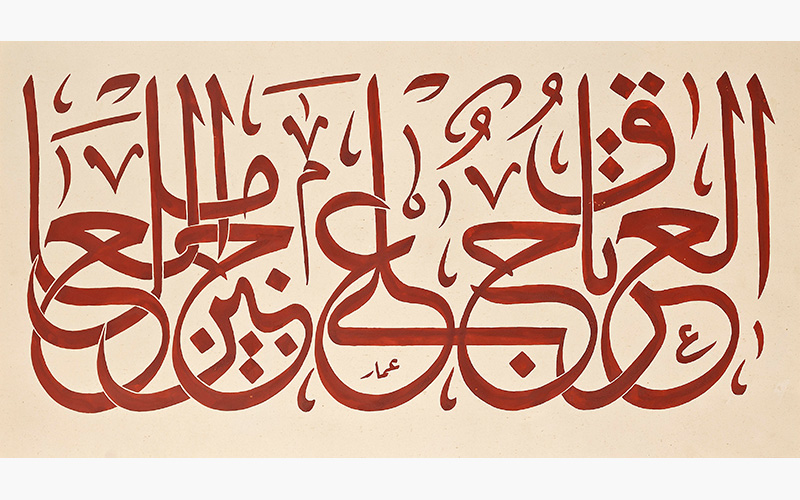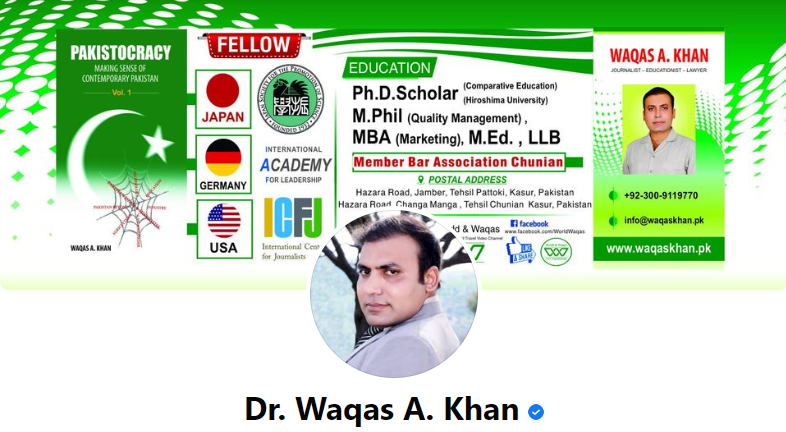
Calligraphy, a centuries-old decorative ornamental handwriting art hails from the Greek civilization. The word Calligraphy is a combination of two Greek words as well, ‘kalli’ (beautiful) and ‘graphia’ (to write). Since the advent of Islam, its holy book, The Quran was written on different mediums. Calligraphists of that era used many writing styles to transcribe the manuscript of the holy book. Since then, this particular art has associated itself with spirituality and is the most popular form of design arts in the Muslim world. After acquiring the status of the noblest of all arts, it has been adorned on the ceiling, exterior, interior and domes of all famous mosques, shrines, buildings and monuments of religious importance in Islam.
Although in the start, the popularity of desktop publishing software pushed the bread and butter away from the profession but with the passage of time, people tired of similar digital fonts are looking back towards genuineness. Today a large number of students in different art institutes are learning this art with great interest. But Calligraphy itself is a “spiritual test”, thinks Khursheed Alam “Gohar Qalam” a famous calligrapher of the country who is a recipient of the Presidential Award for Performance. In a special discussion on the subject with Pakistan Today, he was of the view that art is a spiritual lesson and must not be associated with money.
“If you think that earning ability of an art is a certificate to its preciousness, you are wrong; art and need are two different things. Need and greed are hurting this art badly. I see many students who come to me to learn calligraphy, and when they feel that it is an uphill task and earning opportunities are limited, they leave. A country where a common man is fighting to find a second-time meal, very few are left with money available to buy what we produce with zeal and zest”, Gohar said.
Responding a question about the high prices of calligraphic pieces in the exhibitions, he said: “demand is limited and so is the quality supply. Exhibitions are the only way to run our budget and in addition to attracting more customers and public interest as well. After all, art is not free but if the demand rise, more people will join the profession commercially and the prices will come down gradually. I am not very fan of these exhibitions as those who come here are not more than 1% of our population. A common man cannot differentiate between a good and bad calligraphy so our work for them is not valued as it should.”
Abdul Majeed, Abdul Rehman, Ustad Allah Bakhsh and many others have created miracles in calligraphy. Syed Sadequain Ahmed Naqvi, Tamgha-e-Imtiaz, Pride of Performance, Sitara-e-Imtiaz, also often referred to as Sadequain Naqqash, was a world-renowned Pakistani artist, best known for his skills as a calligrapher and a painter. He is considered as one of the finest painters and calligraphers Pakistan has ever produced. We are one of the few countries in the world where calligraphy on copper is done. But the most common and widely used Perso-Arabic script is the ‘Nastaleeq’. In Persian and Arabic calligraphy it has been dominating since centuries along with Naskh, Kufi and Riqa, other popular styles used for forming the Urdu, Persian and Arabic alphabets.
If we focus on the subcontinent, the history of calligraphy can be divided into five major periods; from Muhammad bin Qasim to Mahmud of Ghazna (93-413 A.H./712 – 1022 A.D.), Mahmud of Ghazna to Zahiruddin Babur (413-932 A.H./1022-1526 A.D.), Mughal Period (932-1275 A.H. / 1526-1857 A.D.), British Period (1857 – 1947) and re-emergence after Pakistan’s independence (1947 to date). Prior to independence, the subcontinent saw the golden period of calligraphy. It was woven in the sub-continental culture in a way that every notable building of that era has calligraphic impressions on it. Interior and exterior of these buildings decorated with the calligraphic panels tell the glory of this art in that era. Calligraphers were the first tutors appointed to teach the princes, princesses and children of nobility. This munificent patronage by the royals to the calligraphers made calligraphy a superior art and enhanced the prestige of such artists in the masses.
But as the British came and the Mughal rule ended, the royal treatment with this art and the artists ended as well. At present, the art and artists have brought a lot of changes to comply with the need of today’s world. Calligraphy is not limited to pen and ink on paper now. It is being woven, included in paintings, carvings, and other two- and three-dimensional works. New materials and mediums are being tested by the modern artists but all of these have one thing in common. The love and reverence for the written word.
Advisor to Prime Minister on National Affairs Irfan Siddiqui thinks that Pakistan is a part of the calligraphic triangle with heritage rich Iran and Saudi Arabia. While talking to Pakistan Today, he assured that an institution would be established in the federal capital for the promotion of the ancient art of calligraphy. He said the division would collaborate with other Islamic countries for the promotion of this magnificent art and educate the young generation about the legacy of our forefathers.
Wasil Shahid, a young calligrapher from Islamabad is of the view that if the government support is there, this art can do wonders in our education system as well. “Can you see the deterioration in the handwritings of our school going children? Our schools have left teaching this art because teachers today have no command in the trade. New talent is scarce, our students are not presentable and to tackle this, calligraphers are ready to volunteer for handwriting training workshops of the public and private teachers in the country”.
Kamran Lashari, Director General at Lahore Walled City Authority is a calligrapher himself. About the art’s patronage, he said that the authority on the directions of the Chief Minister, for the first time is funding, organizing and hosting Lahore Calligraphy Festival 2017 at Alhamra Art Council at the end of this month. The festival will be featuring calligraphy exhibition, competition, workshop, book stalls, mediums and live calligraphy. This will also include traditional and modern style paintings, calligraphic fashion designs, imprints, ceramics, furniture engravings and sculptures.
Dr. Lubna Amjad, a renowned visual artist of the country in a discussion said that calligraphy is all about alphabetic wonder and admiration. There is no soft soul which can ignore the natural alphabetic flow as the waves of the ocean forming artistic crests and troughs. Pakistan was liberated from the British rule in 1947 but our calligraphic roots date back to the early centuries of Islam when we introduced the world to the angular Kufic writing style, she added. But we must not confine calligraphy to Islam, the efforts of Sikh rulers including the court of Raja Ranjit Singh were significant for the promotion of this art.
Calligraphy, as an art is rising again.
No little wonders.



